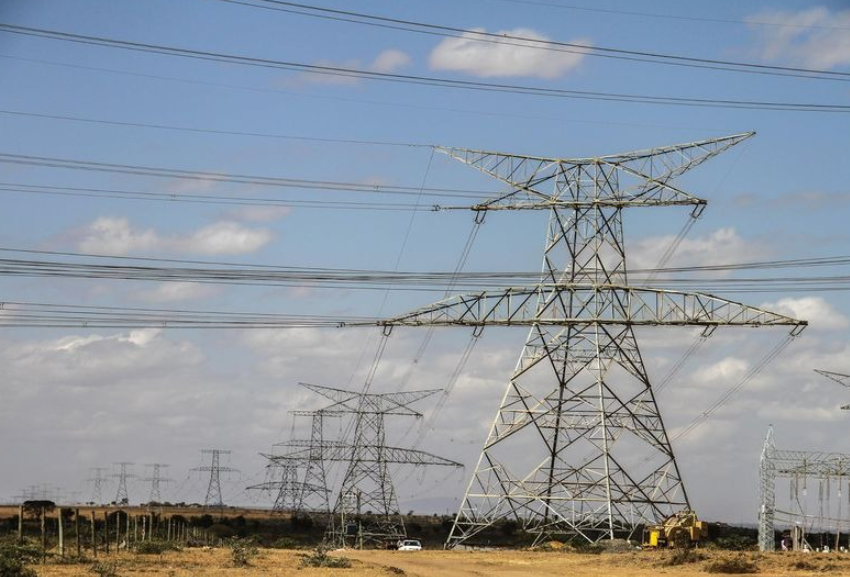Climate plans under scrutiny as world races to close emissions gap

Experts have earmarked 2025 as a pivotal moment for climate action, as countries prepare to submit new climate commitments ahead of the United Nations climate summit (COP30) in Belém, Brazil, in November.
The new climate commitments, known as Nationally Determined Contributions (NDCs), will shape the trajectory of global climate progress through 2035.
Collectively, they will determine how far the world goes toward limiting global temperature rise and avoiding the worst climate impacts, according to scientists.
“These new commitments will show how boldly countries plan to cut their greenhouse gas (GHG) emissions, transform their economies, and strengthen resilience to growing threats like extreme weather, wildfires and floods,” says World Resources Institute (WRI) Senior Associate, International Climate Ambition, Jamal Srouji.
A few countries, such as Brazil, the UK and the US, have already put forward new climate plans – and their ambition is a mixed bag, says Srouji.
WRI analysed the initial submissions for a snapshot of how countries’ climate plans are shaping up so far and what they reveal after scientists declared 2024 the hottest year ever recorded.
It was the warmest year ever recorded following nine record-breaking years of heat over the past decade.
Last year’s unprecedented temperatures fuelled heatwaves, drought, wildfires, storms and floods that killed thousands of people and displaced millions more.
Life has become dangerous with 1.3 degrees Celsius (°C) of human-induced warming, according to the World Weather Attribution (WWA), highlighting the urgency of moving away from planet-heating fossil fuels as quickly as possible.
More emissions
“Every broken record was not just a number, but accompanied by people losing their lives and livelihoods in ever hotter heatwaves and devastating floods. Yet new oil and gas fields continue to open with an increase in subsidies as fossil fuel emissions reach an all-time high,” notes WWA Co-lead Dr Friederike Otto.
“As the latest Intergovernmental Panel on Climate Change report shows clearly, we have the technology and knowledge needed to switch to renewable energy supply, reduce demand, and change transport systems.
Implementing these is not only largely cheaper and more reliable than fossil fuels but has enormous health co-benefits.”
Early this year, climate scientists announced that the Earth’s average temperature increased to more than 1.5 degrees Celsius above pre-industrial levels for the first time in 2024, breaching the Paris Agreement threshold to avert the worst effects of global warming, and sending ominous signals.
A decade ago, the world was headed toward 3.7-4.8°C (6.7-8.6 degrees Fahrenheit) of warming by 2100, threatening catastrophic weather, devastating biodiversity loss and widespread economic disruption.
In response, the Paris Agreement set a global goal: limit temperature rise to well below 2°C (3.6 degrees F) and strive to limit it to 1.5°C (2.7 degrees F), thresholds scientists say can significantly lessen climate hazards.
Though some impacts are inevitable – with extreme heat, storms, fires and floods already worsening – lower levels of warming dramatically reduce their severity. Every fraction of a degree matters.
To keep the Paris Agreement’s temperature goals within reach, countries agreed to submit new NDCs every five years.
These national plans detail how (and by how much) each country will cut emissions, how they will adapt to climate impacts like droughts and rising seas, and what support they’ll need to deliver on these efforts.
“While the latest NDCs cut emissions more deeply than those from 2025, they still fall short of the ambition needed to hold warming to 1.5°C or 2°C.
If fully implemented (including measures that require international support), they could bring down projected warming to 2.6-2.8°C (4.7-5 degrees F),” writes WRI’s Srouji in the institute’s latest bulletin.
According to him, without stronger policies to meet countries’ targets, the world could be heading for a far more dangerous 3.1°C (5.6 degrees F) of warming.
Now the third round of the NDCs is underway, with countries expected to set climate targets through 2035.
The new NDCs should reflect the outcomes of the 2023 Global Stocktake, which was the first comprehensive assessment of global climate progress under the Paris Agreement.
In addition to bigger emission cuts to hold warming to 1.5°C, the Stocktake urged countries to act swiftly in areas that matter most for addressing the climate crisis – especially fossil fuels, forests, renewables, transport and forests – and to do more to build resilience to climate impacts.
“The 2025 NDCs are also an opportunity to align near-term climate action with longer-term goals. Over 100 countries have already pledged to reach net-zero emissions, most by around mid-century. Their new NDCs should chart a course toward achieving this,” says Sourji.
New deadline
Under the Paris Agreement’s timeline, 2025 NDCs were technically due in February. Only a handful of countries had submitted them, covering around a quarter of global emissions.
The early movers include a diverse mix of developed and developing nations from different regions and economic backgrounds.
UN member countries were given a new September deadline to submit their NDCs after most failed to meet the largely symbolic 10 February 2025 deadline.
Announcing the new deadline, UN Climate Change Executive Director Simon Stiell described the plans as among the most important policy documents governments will produce this century, noting that their quality should be the paramount consideration.
Stiell said taking a bit more time to ensure these plans are first-rate makes sense.
Among the G20 – the world’s largest GHG emitters – only five countries (Brazil, Canada, Japan, the UK and the US) have submitted new NDCs so far. President Donald Trump has since announced his intention to withdraw from the Paris Agreement.
Several smaller and highly vulnerable countries – Ecuador, Kenya, the Maldives, the Marshall Islands, Singapore, Uruguay, Zambia and Zimbabwe have stepped forward. Close to 90 per cent of countries have yet to submit their new NDCs.
There are several reasons for this, according to Srouji.
“The last round of NDCs was pushed back by a year due to the COVID-19 pandemic, giving countries only four years to prepare new plans. Geopolitical tensions, ongoing conflicts and security concerns have further complicated progress. Many smaller developing nations are also facing capacity constraints as they work to complete biennial climate progress reports and new national adaptation plans (NAPs), also due this year”.
Compared to previous targets, the NDCs submitted so far have made a noticeable but modest dent in the 2035 “emissions gap” – the difference between where emissions need to be in 2035 to align with 1.5°C and where they’re expected to be under countries’ new climate plans.
Much of the progress in narrowing the gap comes from major emitters, mostly Brazil, Japan and the US.
Given their large emissions profile, their new commitments account for the majority of the reductions seen so far.
While this marks progress, it’s far from what’s needed to keep global warming within safe limits that require much steeper cuts than what is currently on the table.
Many of the largest emitters are yet to submit their 2035 targets, the remaining G20 countries accounting for about two-thirds of global GHG emissions. This makes their forthcoming NDCs especially important.















